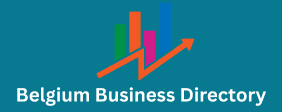Image masking is an essential technique in fashion photography, allowing photographers and editors to isolate subjects, enhance details, and create striking compositions. Given the fast-paced nature of the fashion industry, effective masking can elevate an image’s quality and ensure that it meets the high standards of branding and marketing. This article explores the best practices for image masking in fashion photography, emphasizing the importance of precision, tools, techniques, and workflow efficiency. By following these guidelines, photographers can achieve stunning results that resonate with audiences and enhance the visual narrative of their work.
Understanding the Importance of Image Masking
In fashion photography, the primary goal is often to showcase clothing, accessories, and the model in a way that highlights their unique features and beauty. Image masking plays a crucial role in achieving this by image masking service editors to isolate the subject from distracting backgrounds or elements. By creating clean and precise masks, photographers can manipulate images more freely, applying adjustments to colors, lighting, and textures that enhance the overall aesthetic. Furthermore, effective masking enables seamless integration of the subject into various marketing materials, such as lookbooks, advertisements, and social media posts, ensuring a polished and professional appearance.
Choosing the Right Tools for Masking
Selecting the appropriate tools for image masking is vital for achieving high-quality results in fashion photography. Software like Adobe Photoshop is the wedding photo editing that captures every beautiful detail standard for image editing, offering a variety of masking tools, including layer masks, clipping masks, and quick selection tools. Layer masks are particularly favored for their non-destructive nature, allowing editors to hide or reveal parts of an image without permanently altering it. Additionally, the Pen Tool is invaluable for creating precise paths around intricate details, such as hair or lace. By familiarizing themselves with these tools, photographers can streamline their workflow and achieve cleaner masks that enhance the final image.
Mastering Selection Techniques
Effective selection techniques are crucial for achieving accurate masks, especially in fashion photography where details matter. The use of virgin islands mobile data tools, such as the Quick Selection Tool or the Magic Wand Tool, can help isolate subjects quickly. However, for more complex shapes, the Pen Tool is often the best choice, providing precise control over curves and edges. Once a selection is made, it’s essential to refine the edges using tools like “Select and Mask” to ensure a smooth transition between the subject and the background. This step is particularly important for fashion images, where the model’s hair and clothing can have intricate details that need careful attention.
Refining Edges for a Polished Look
Refining edges is one of the most critical aspects of image masking in fashion photography. Harsh or jagged edges can detract from the overall quality of the image, making it appear unprofessional. To achieve smooth and natural-looking edges, utilize the feathering option in the masking settings, which softens the transition! between the mask and the background. Additionally, using the “Refine Edge” brush can help fine-tune areas! where transparency needs to be preserved, such as around hair or delicate fabrics. Paying attention to these details ensures that the final image appears polished! and cohesive, ultimately enhancing the viewer’s experience.
Implementing Adjustment Layers for Enhanced Effects
Incorporating adjustment layers alongside image masks can significantly improve the final outcome of fashion photographs. Adjustment layers allow for targeted edits to color, contrast, brightness, and saturation without affecting the original image. For instance, if a model’s skin tone appears slightly off, a Hue/Saturation! adjustment layer can be applied to correct it selectively. Similarly, applying Levels or Curves adjustments can enhance the overall image quality. By using adjustment layers in conjunction with masks, photographers can create a more dynamic and visually! appealing composition, ensuring that each element of the image is optimized for impact.
Streamlining Your Workflow
Efficiency is key in the fast-paced world of fashion photography, and streamlining! your workflow can save valuable time during the editing process. Establishing a consistent approach to image masking can help speed up the editing process while maintaining high-quality results. Consider creating presets for commonly used masks or adjustments, allowing for quick application across multiple images. Organizing your layers and naming them clearly can also enhance workflow efficiency, making it easier to navigate complex projects. By adopting these practices, photographers can focus more on creativity and less! on repetitive tasks, ultimately producing better work in less time.

